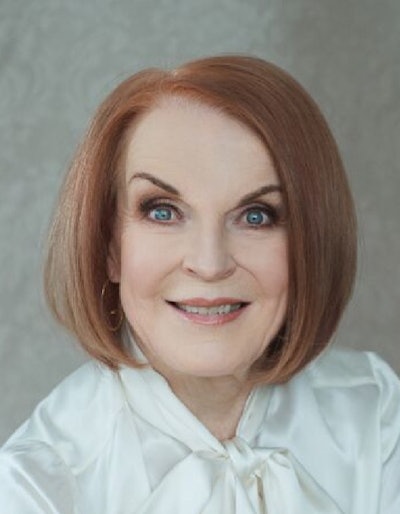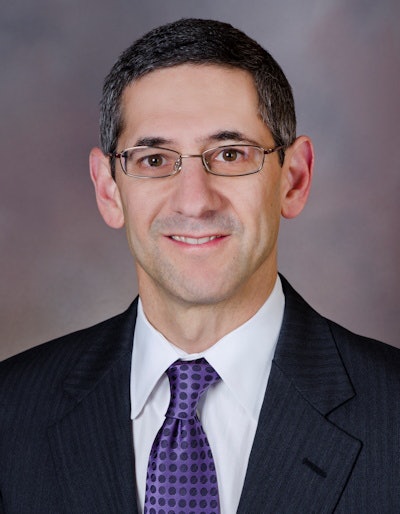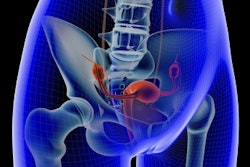
While there are passionate advocates for ultrasound contrast in radiology and other medical specialties, its use has failed to expand -- despite the fact that it offers solid benefits, according to ultrasound experts.
Why? In part due to issues such as workflow challenges, a nearly 15-year-old black box warning issued by the U.S. Food and Drug Administration (FDA), and possible resistance to incorporate ultrasound contrast because of the requirement for sonographers to learn new skills.
 Dr. Michael Main.
Dr. Michael Main.In fact, ultrasound contrast is used in less than 10% of echocardiograms, said Dr. Michael Main of the University of Missouri in Kansas City, MO. Main is co-president of the International Contrast Ultrasound Society (ICUS).
"Ultrasound-enhancing (contrast) agents continue to be underutilized in the U.S.," he told AuntMinnie.com. "Contrast agents should be used in about 30% of echocardiograms. That is the figure at my institution."
The need for "at least one if not more" physician champion who is a proponent of ultrasound contrast and the need for a sonographer-initiated protocol where sonographers administer contrast at the point of care based on "a standing order" are necessary components to integrate ultrasound contrast in a given clinical practice, Main noted.
Benefits of ultrasound contrast
The benefits of using ultrasound contrast agents are clear, according to Dr. Richard Barr of Southwoods Imaging and Northside Medical Center in Youngstown, OH.
 Dr. Richard Barr.
Dr. Richard Barr."It is portable, inexpensive, and there is no ionizing radiation involved," Barr told AuntMinnie.com. "You can repeat the studies in the same patient, and the image quality is outstanding."
The fact that patients who must undergo continual scanning -- particularly those with chronic conditions like inflammatory bowel disease -- are spared radiation is a definite benefit to ultrasound contrast, according to Dr. Stephanie Wilson of the University of Calgary in Alberta, Canada. Wilson is also co-president of the ICUS.
"It's established that patients with inflammatory bowel disease require regular surveillance performed with imaging because their laboratory tests and their symptoms don't tell the doctor everything that is going on," Wilson told AuntMinnie.com. "If those patients that are seen at different intervals, yearly or every six months, depending on the stability of the disease, had to undergo computed tomography enterography (CTE), that would not be good for them."
Apart from cardiology and gastroenterology, another clinical specialty that would be a very good fit for ultrasound contrast is pediatrics, Wilson noted.
"If you look at trauma in the pediatric population, children do not always need a CT scan when they go to the emergency department," she said. "As this is a completely radiation-free modality, it has got big advantages in that sense."
Is it safe?
Contrast advocates claim that one of the foremost reasons why ultrasound contrast has failed to make a significant mark in diagnostic imaging is due to a 2007 FDA black box warning. The warning was prompted by deaths of several patients who had been exposed to ultrasound contrast agents, Main said, although there was never proof that use of the agents was responsible for patient deaths.
"[The black box warning] had a major chilling effect on the use of ultrasound contrast," he said. "The FDA had received several reports of patients who had died in temporal proximity to the use of a contrast agent. There was a temporal relationship, but no causal relationship."
The FDA black-box warning also adversely affected the use of ultrasound contrast in Canada, according to Wilson.
 Dr. Stephanie Wilson.
Dr. Stephanie Wilson."The black box [warning] was devastating," she said.
Thankfully, the language attached to the black-box warning has been relaxed in the last decade, in terms of warning of potential serious adverse events, Main said. Perhaps as a result, use of ultrasound contrast by cardiologists is ticking up, he added.
"We are reassured in the cardiology community that these [ultrasound contrast] agents are very safe and we do not have to be overly concerned [about severe adverse reactions]," he said, pointing out adverse reactions that do occur with exposure to contrast agents are transient and not severe.
 Dr. Jonathan Linder.
Dr. Jonathan Linder.In fact, in response to communication from the FDA in the spring of this year, the American Institute of Ultrasound in Medicine (AIUM) and the American Society of Echocardiography (ASE) joined ICUS in releasing a statement that emphasized that severe adverse reactions to ultrasound contrast agents are extremely rare and that millions of doses of ultrasound contrast agents have been injected in patients with no safety issues occurring.
In April of this year, MedWatch and the FDA called for discontinuing use of ultrasound contrast agents that contain polyethylene glycol (PEG) in patients who are sensitive to it. But ultrasound contrast advocates pushed back.
"This knowledge about PEG does not increase the prevalence of severe allergic reactions [due to exposure to ultrasound contrast agents]," Dr. Jonathan Linder of Oregon Health & Science University in Portland told AuntMinnie.com. "We are improving the safety [of ultrasound contrast agents] because now we are asking patients about [allergy to] PEG."
Addressing obstacles
A stumbling block to increasing the uptake of ultrasound contrast is that it may require a change in workflow. And changes in practice tend to require a change in culture at a healthcare facility -- in this case, the fact that sonographers may need to gain competency in inserting IVs or that a nurse may need to be involved because a sonographer is not permitted to run an IV, Main said.
"If sonographers need to find a nurse to run an IV, they may not [use ultrasound contrast] because it will slow them down," he said.
Another consideration is where the contrast agents will be stored, which would likely involve pharmacy professionals at a given healthcare facility, Linder noted.
What's likely not hindering ultrasound contrast use is reimbursement: With the exception of myocardial perfusion imaging, ultrasound contrast is reimbursed both through private insurance and through the U.S. Centers for Medicare and Medicaid Services (CMS).
Bright future?
Proponents of ultrasound contrast are optimistic that its application will expand in the coming years. One motivation could be that an imaging center will gain increased credibility and respect amongst peers if it does offer ultrasound contrast, according to Linder.
"This is a technology that is considered state-of-the-art," he said. "If you don't use it, then that means your lab is not excellent."
The potential for increased use of ultrasound contrast is particularly high in cardiology, Main noted.
"In the current generation of training in cardiology fellowship programs, certainly in programs like ours, we see on a daily basis the impact that ultrasound contrast has on the lives of patients in making accurate and early diagnosis," he told AuntMinnie.com. "And as these individuals go out and begin running labs, they are going to embrace the use of contrast."



















